DAVE WALSH profiles Whitby-born novelist Storm Jameson, the socialist, feminist and activist who was an early ILP supporter and lifelong campaigner for a better society.
Margaret Storm Jameson was born in Ladysmith Avenue on Whitby’s West Side in 1891. Her house is now part of the Saxonville Hotel complex. Her father and grandfather were successful shipbuilders, although at the time her father’s firm had been liquidated and he had turned to work as a ship’s captain. 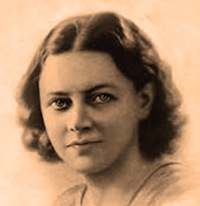
Her mother, Hannah, was from the town’s well-to-do, Tory and ship-owning Galilee family, and it seems family divisions and tensions led to a troubled childhood for Storm (she always used her middle name, taken from her father’s family), caught as she was between warring factions. She and her siblings were left mainly in the care of her mother who thought nothing of thrashing them for any mild transgressions or misdemeanours.
However, the young Storm was allowed a high degree of intellectual freedom, based around church activities (her aunt was a Deacon in the local Congregational Church). This freedom enabled her to meet and be taught informally by Haydn Williams, a man whose activities were later chronicled in her 1938 novel, The Moon is Making. Williams appeared, thinly-disguised, as arch-nonconformist cleric ‘Handel Wikker’, ministering to a community that, in the words of the author HE Bates reviewing it in the arch Conservative Morning Post, was “wretchedly narrow and fiercely parochial in their capacity for small feuds”, a description still resonant for anyone who has been involved in small-town politics.
This early intellectual journey stood her is good stead later in life when she was sent to a local grammar school where she developed serious political views under the influence of two brothers, Sydney and Oswald Harland. The eldest, Sydney, went on to become one of the UK’s leading geneticists, a campaigner against British colonialism, and one of the founding fathers of the green movement. The brothers were active supporters of the ILP and, although not old enough to be engaged in ‘grown-up’ activism, were regular supporters of ILP street corner speakers in their home town of Scarborough where they helped deliver copies of party newspapers and the Clarion.
Jameson moved on from these influences to become an active teenage supporter of both the ILP and women’s suffrage (at the time, the first actions of the Women’s Political and Social Union were receiving attention). After leaving school, she took what was then an unusual route for a lower middle class girl and elected to go to university. Oxbridge was out of reach, so she went to study English Literature at the University of Leeds where she became secretary of the university’s Women’s Representative Council.
Advanced debate
It was her extra mural activities that took up her day-to-day life. First, she became active in the Leeds Arts Club. As its name suggests, this was primarily a club devoted to the arts, mainly writing, painting and dramatics, but it was also a centre for “advanced debate”, as it was then known, an aspect encouraged by its founder, Arthur Orage, an avowed socialist and Jameson’s champion.
Orage was born in the village of Dacre, near Harrogate, and bought up in a non-conformist household. He went on to become an elementary teacher in a Leeds ‘board school’ where he taught the children of working class families from the city centre district. He was a founder member of the Leeds ILP and became a regular writer for the party’s paper, the Labour Leader, where he concentrated on questions of philosophy, and championed the work of socialist thinker, Edward Carpenter.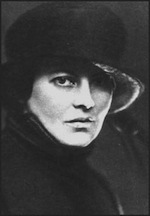
His socialism was esoteric – not for him “gas and water” reform via a town hall, or social advance through industrial struggle, although he certainly supported struggle in its widest sense. He believed that: “Economic power precedes political power and political reform is useless without prior economic reform.”
Orage burgeoned under the influence of Carpenter, an anarchistic evolutionary socialist who lived just outside nearby Sheffield. Orage (and also, perhaps, Jameson) met Carpenter often as well as Carpenter’s own mentor, the American poet, Walt Whitman.
Orage’s individualistic socialism had an anarchistic taste. While he encouraged open debate between all shades of radical political opinion in the pages of his magazine The New Age, his editorials were explicit in expressing “a passionate desire to break all bounds, whether human or divine”. His favoured approach was that of the ‘Guild socialists’ who looked to the working classes and trade unions to form guilds to take over, own and run – on a co-operative basis and with a strong craft ethos – industry and the workshops.
They were often ridiculed as “socialist mediaevalists” who wanted “a better 1400s” instead of the surrounding greyness of Edwardian industrial Britain, but their emphasis on working class self-management and control struck a chord with the emerging syndicalist movement active in the mining and railway trade unions. Their inspiration came from William Morris and the arts and crafts movement, but the Labour Party, once in power, looked to the other William Morris (the motor manufacturer) for guidance on the structure and techniques of industrial management, rather than the socialist pre-Raphaelite from Hammersmith.
Orage, who later succumbed to occultism, had a lifelong influence on Jameson and she later became a regular writer for The New Age. She was ready to back local Leeds tailoring workers caught up in the strike wave of 1911 and collected food for their families from her fellow middle class students. She wrote later of that experience, in a passage showing the influence of Orage, that: “I believe that there exists in the intellect of the working class a vigour and freshness that may well bring forth a new Renaissance. For generations crushed under the industrial slavery, I believe that it will move when it does move, with a mighty bound.”
The influence of Orage and Carpenter stayed with Jameson in the 1920s, but by the end of that decade the realities of economic depression pushed her towards a more pragmatic socialist position. In her 1945 novel, The Journey of Mary Hervey Russell, the central male character, Hugh Hervey, is mocked for “wishing to turn back the industrial clock so that England may be again a nation of craftsmen”. His Whitby-born and bred wife Mary observes acidly, “You’re a Tory yourself, really. The other’s only a dream you had. Oh, a charming dream, but a dream none the less.”
The other influence on Jameson at this time was the women’s suffrage movement, and she complemented the intellectual life of the arts club with the activism of the WPSU.
In July 1913 – exactly 100 years ago – she took part in the Women’s Pilgrimage to show the House of Commons how many women wanted the vote. Members of the National Union of Women’s Suffrage Societies set off in the middle of June and, over the following six weeks, held a series of meetings all over Britain. An estimated 50,000 women reached Hyde Park in London on 26 July. According to her autobiography, Shades of Saurez, she bit a policeman’s ear during the demonstration.
Marriage and war
On 13 January 1913 Jameson had married Charles Clarke, a fellow student at Leeds. They moved to London where the relationship rapidly soured. She tried to commit suicide with an overdose of phenacetin, and he was deeply unsympathetic. She fell ill at the end of the year and went home to her parents in Whitby, while he moved in with his Quaker parents in North London.
The marriage, however, staggered on into the First World War and resulted in the birth of her only son. The war touched her deeply in other ways too. Her beloved brother, Harold, was killed in France, and her father, skippering a merchant vessel, was torpedoed by a U-boat and taken into captivity for the duration of the conflict. These events, and knowledge of the horrors of the trenches, instilled in her the third component of her socialism – an abiding hatred of war and force.
At the end of the war, with an extra mouth to feed, and the need to pay for an errant husband, Storm turned to serious novel writing. Her first novel, The Pot Boils, published in 1919, was inspired by her Leeds student life, and includes a description of a campus “swept by socialistic thought” where female students, inspired by their reading of Marx, opposed a curriculum imposed by a reactionary professor of economics.
Alas, the novel largely passed critics and readers by, while the few who did review it were damning. A Punch review said that “although the book is hardly likely to gain universal popularity … certain persons, notably very young socialists and experts in Labour journalism, may find it of absorbing interest.”
Her marriage to Clarke came to its inevitable end, but in January 1924 she met her future husband for life, Guy Chapman, a junior academic. They soon began a relationship and married on 1 February 1926.
Now living in a less stressful manner, Jameson continued to write novels, including a trilogy about a family of Whitby shipbuilders, The Lovely Ship, The Voyage Home and A Richer Dust. These were not just potboliers based around the family, but were a history of her father’s time and place in which the shipyard workers featured as key characters, as both masters and men struggled in a time of economic decline and technological change.
Jameson did not romanticise Edwardian, insular, conservative Whitby, but recognised the deep class divisions that existed in a small town which – unlike neighbouring East Cleveland or Middlesbrough – did not have an established and vocal Labour movement for working class self-expression.
In the ‘Haydn Williams’ novel, The Moon is Making (mentioned above), based on shipbuilding and fishing, she drew attention to the manner in which social divisions in her native town were etched into the landscape, with the River Esk dividing the lower class district of the East Cliff (‘Under Wik’) from the more upper class area of the West Cliff (‘Over Wik’).
In 1927 she joined the Daily Mirror and became what was probably the first ‘woman’s correspondent’ on a Fleet Street paper. Women had just gained the vote and were encroaching heavily into the Labour force, so the paper’s editor, Alexander Campbell, and owner Harold Harmsworth, saw the need to appeal to new women readers. Jameson, however, was corralled into ‘safe’ subjects like clothes, cooking and entertaining, although she managed to pen some tentative articles about sexual freedom.
Revolutionary writers
In September 1932 Jameson became close friends with Vera Brittain. The two women had both lost brothers during World War One and, as a result, became committed pacifists. Jameson reviewed Brittain’s Testament of Youth in The Times, stating that it was an “unforgettable” representation of war from a woman’s perspective.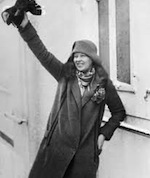
In the late 1920s she became involved with the British section of the International Union of Revolutionary Writers – a Comintern Front Group. At a meeting in January 1934, spurred on by the effects of recession, the economic failure of the national government, and the growth of fascism, it was decided to publish a new Marxist intellectual journal. The Left Review first appeared in October 1934 and many of Jameson’s fellow contributors were to become household names in the future, including Tom Wintringham, John Strachey, Hugh McDiarmid, AL Morton, WH Auden, Stephen Spender, Edward Hutchinson, Jameson’s fellow Yorkshirewomen, Winifred Holtby, and Edward Upward.
Despite her association with this leftist, London-based glitterati, Jameson continued her association with Whitby, and returned to the town to live in a 1930s semi-detached house on Mayfield Road, which fronted onto the Guisborough Moors Road and emptied out into the open countryside at the rear.
She continued to write from there, and was active in the local Whitby Constituency Labour Party, serving for a number of years as the CLP secretary, and the CLP’s delegate to Labour’s annual conference where she upset many in the party establishment by speaking and arguing for workers’ control of industry.
On 7 July 1934, the British Union of Facists held a large rally at London’s Olympia. About 500 anti-fascists, including Jameson, Brittain, the Reverend Dick Sheppard and Aldous Huxley (another writer with a Teesside connection), managed to get inside the hall. When they began heckling Oswald Mosley they were attacked by hundreds of black-shirted stewards, and several of the protesters were badly beaten by the fascists.
Jameson argued in the Daily Telegraph: “A young woman carried past me by five Blackshirts, her clothes half torn off and her mouth and nose closed by the large hand of one; her head was forced back by the pressure and she must have been in considerable pain. I mention her especially since I have seen a reference to the delicacy with which women interrupters were left to women Blackshirts. This is merely untrue… Why train decent young men to indulge in such peculiarly nasty brutality?”
Her friendship with Sheppard also led to one of Jameson’s political errors. Sheppard was, like a radical cleric of our own time, Giles Fraser, a canon of London’s St Paul’s cathedral. An army chaplain during World War One and a committed pacifist, he was concerned by the failure of the major nations to agree to international disarmament and in October 1934 had a letter published in the Manchester Guardian inviting readers to send him a postcard giving their undertaking to “renounce war and never again to support another”.
Within two days 2,500 responded and over the next few weeks around 30,000 pledged their support for Sheppard’s campaign. The resulting Peace Pledge Union was supported vocally by Jameson and many fellow writers and intellectuals, including Bertrand Russell, Labour Party leader George Lansbury, and the First World War war poet, Siegfried Sassoon.
The error here was the naive pacifism of the PPU, a blindness to the brute force shown by the fascist and Nazi states on the European mainland which were determined to extirpate any and all progressive movements of the left by force, if needed. Jameson remained a member of the PPU until the invasion of France and the Low Countries in May 1940. She latter wrote in her autobiography: “I had joined Dick Sheppard when he started it, in October 1934. Then, I was absolutely certain that war is viler than anything else imaginable… I don’t think that now.”
In 1936, Jameson spoke for her fellow left writers, in calling for the Labour Party to work with the ILP and the Communist Party to create a British ‘popular front’ movement. In one article she called for “the reanimation of the Labour Party by a change in its constitution”.
“The statement that the Labour Party is ruled by the trade unions is delusive,” she said. “As constituted, it is ruled by a narrow oligarchy of trade union leaders, as much out of touch with their rank and file as is the executive of the Labour Party with the party rank and file. An alliance, on the basis of an exactly defined programme, with the progressive Liberals, ILP and the Communist Party, as distinct from a shabby vote-catching agreement between leaders, is a preliminary step towards the only form of popular front worth voting for. Apart from a people’s front, what indeed is there to hope for in the political future? And without it, what hope of averting the eventual triumph of reaction by the default of the Labour Party?”
Struggle continues
It was at this time that Jameson became UK leader of the international writers’ group, PEN (Poets, Essayists and Novelists), a body that acted as a global voice for writers and for the integrity of writers and writing. At a time when writers in continental Europe were under attack from Nazism and fascism, this role had to involve much more than issuing pious statements. PEN became active in rescuing writers facing persecution and imprisonment, and arranging for them to enter the UK as asylum seekers.
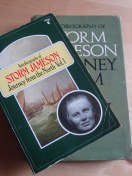 Jameson, in her PEN role, had to be the named sponsor for many of these people, and for a time her London home resembled an airport arrivals lounge for writers fleeing countries such as Austria, Spain, Germany and Czechoslovakia, where the tanks and planes of the axis were grinding out the life force of democracy.
Jameson, in her PEN role, had to be the named sponsor for many of these people, and for a time her London home resembled an airport arrivals lounge for writers fleeing countries such as Austria, Spain, Germany and Czechoslovakia, where the tanks and planes of the axis were grinding out the life force of democracy.
The experiences of these men and women led Jameson to add a further ideological facet to her socialism – the conviction that socialism, if it were to survive, had to be built within a united ‘Europe of the nations’. This conviction was strengthened by her growing disillusionment with the Soviet Union. This was at a time when the Hitler-Stalin pact, and the national Communist movement campaign against the war, looked to be merely ceding victory to fascism. Equally, there were suspicions that the United States, despite Roosevelt’s New deal, was still at heart a nation actively hostile to social progress and socialism.
During the war, Jameson carried on with her writing, much of her output being novels set in Whitby (or Danesborough, as she christened it), augmented by work as a jobbing journalist and pamphleteer for the Ministry of Information, in which she highlighted the role of women workers (in the same fashion as Staithes artist Laura Knight provided vivid paintings of the factories and the work of the home front emergency services).
As UK spokesperson for PEN, Jameson had to confront the Communist Party’s growing opposition to democratic socialism. Now that the Soviet Union had entered in the war, the CP had become super-patriots, often out-Churchilling Churchill in their opposition to any move from the left which could be seen as detrimental to the interests of the Soviet Union.
In July 1945 Jameson visited countriess such as France, occupied Germany, Czechoslovakia, Poland and Holland, and saw at first hand the concentration camps. But she also began to witness the growing persecution (and indeed imprisonment) of writers in eastern Europe who were regarded as hostile to Stalinist orthodoxy. In an act of supreme irony, PEN had to help some refugee writers a second time when they fled Stalinism just as previously they’d helped them flee from Nazism.
As the cold war developed, this became a double-faceted issue for Jameson. Many US writers faced growing persecution too, from McCarthyism, and some, such as veteran star Charlie Chaplin and screen director Sam Wanamaker, had to flee the US to survive and continue to work.
There were also some not-so-subtle attempts to nobble groups like PEN through the covert use of cash, funnelled from the CIA to front groups such as the Congress for Cultural Freedom. And Jameson had to face bitter anti-Communist criticism from some writers, such as Stephen Spender, who had been her allies in the 1930s.
In the post-war years she carried on with her work for PEN and continued to write novels, either set in Whitby or using characters based on local Whitby place-names, such as Nicholas Roxby, Captain Esk or Mr Thorgill (the latter a a fictional WEA teacher from north Yorkshire who is used and patronised by younger, upper class and thoroughly Stalinised university academics).
Later years
In later years, the ageing Jameson often appeared to hail from a past age, although her political convictions stayed fixed to democratic socialism, in opposition, as it is often put, to ‘both Washington and Moscow’.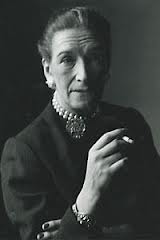
Her determination and central guiding point remained European unity, an ideal modelled on her upbringing in Whitby, which she saw as an ideal, balanced, human community, and rural France where a veneration of peasant life was meshed with a sturdy independence similar to that of the fishermen of her native town.
Jameson’s autobiography, Journey from the North, shows how Whitby and the surrounding moors shaped her life’s outlook and her own life force. It also shows how growing up in Edwardian England at a moment of radical change, and coming to maturity during the First World War, shaped her own experience of conflict: as a woman working in what was then a male-dominated sphere of culture; as a socialist with roots in a proudly individualist protestant tradition; as an atheist with roots in religious nonconformity; and as a ‘modern’ person in a world in which, as she graphically put it, “the Victorian habit persisted, like an old coat hung behind the door”.
The central truth was that she saw her writing as a way of bringing about a better, socialist society. As she once said: “The impossible talked of is less impossible from the moment that words are laid to it.”
Jameson enjoyed a brief renaissance in the 1970s when some of her novels and her autobiography were re-published as an act of homage by the feminist publishing house, Virago. A blue plaque was erected at the family home in Ladysmith Avenue, and a new student accommodation block at Leeds University was named after her. Despite this, I still wonder whether holidaymakers staying at the Saxonville Hotel, or indeed today’s students at Leeds really know anything about her.
Storm Jameson died a very old lady in 1986 in a Cambridge nursing home. Yet, despite a lonely death amidst the featureless black earth fens of St Neots (a landscape as far removed from her birthplace cannot be imagined), she died a Whitby woman. To borrow a common cliché, “You could take the woman out of Whitby, but you could not take Whitby out of the woman.”
—-
Dave Walsh is a member of the Hannah Mitchell Foundation and secretary of the Middlesbrough South and East Cleveland Constituency Labour Party.
This article was originally published on http://republic-of-teesside.blogspot.co.uk/

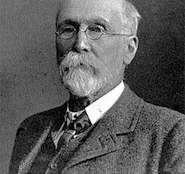
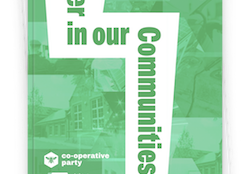
29 July 2015
Interesting, but:-
You rather underplay the significance of the younger Harland brother, Oswald, who remained a committed socialist and continued to be active in the workers’ education movement during his lifelong career as a successful and revered teacher at West Leeds High School, Armley, where he was latterly deputy head – he wrote many books and articles, some of distinction and importance, including four undeservedly little-known novels.
Even more importantly, you completely fail to mention her formative postgrad student days at Kings College, London University, before WW1, where she shared digs in south London with the Harland brothers and fellow Yorkshireman Archie White (who became a distinguished soldier and VC hero). The inseparable though often quarelling four of them rampaged around London engaging enthusiastically in left wing political activity, starting a political agitprop movement called the Eikonoclasts.
This period is well documented in both Storm Jameson’s autobiogs, as well as (with, beware, much author’s licence) in her novel ‘The Happy Highways’, which I’m surprised you don’t mention – much more interesting, readable and important than its deservedly-panned predecessor, ‘The Pot Boils’. This foursome’s friendship endured for life at a distance as they went their separate ways, though her expressed wish in her second autobiog that her three friends would outlive her, was precisely not fulfilled – they all died before her, one by one.
And no, of course, Leeds univ students haven’t heard of her – I hadn’t myself till decades after I left. Even at Kings College London, the series of plaques on the street frontage commemorating distinguished former scholars does not include Storm Jameson, nor any of her three distinguished fellow former students there, the Harland brothers and Archie White.